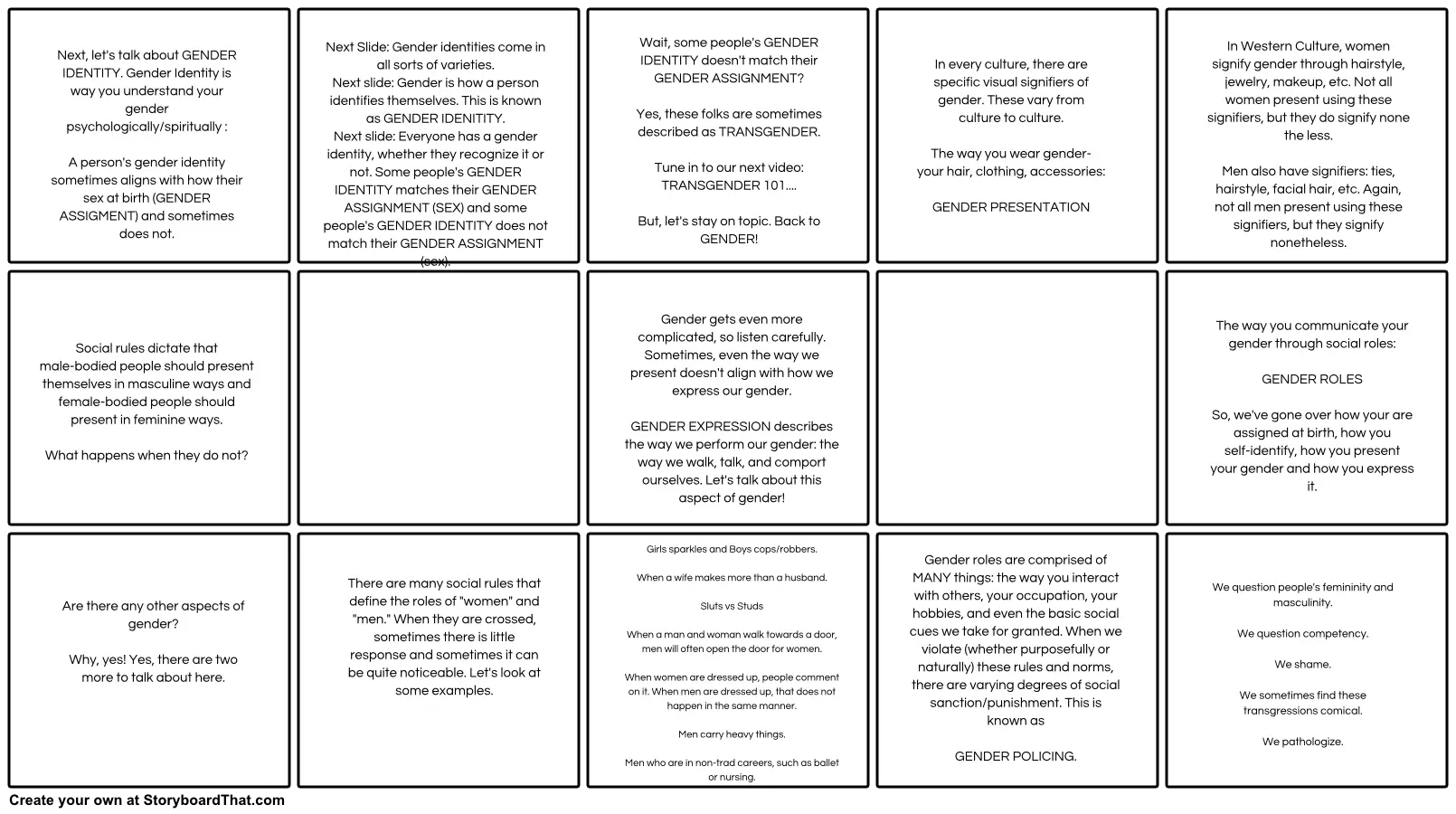Version 752 Part 2

Montāžas Teksta
- Next, let's talk about GENDER IDENTITY. Gender Identity is way you understand your gender psychologically/spiritually : A person's gender identity sometimes aligns with how their sex at birth (GENDER ASSIGMENT) and sometimes does not.
- Next Slide: Gender identities come in all sorts of varieties. Next slide: Gender is how a person identifies themselves. This is known as GENDER IDENITITY. Next slide: Everyone has a gender identity, whether they recognize it or not. Some people's GENDER IDENTITY matches their GENDER ASSIGNMENT (SEX) and some people's GENDER IDENTITY does not match their GENDER ASSIGNMENT (sex).
- Wait, some people's GENDER IDENTITY doesn't match their GENDER ASSIGNMENT? Yes, these folks are sometimes described as TRANSGENDER. Tune in to our next video: TRANSGENDER 101.... But, let's stay on topic. Back to GENDER!
- In every culture, there are specific visual signifiers of gender. These vary from culture to culture. The way you wear gender- your hair, clothing, accessories: GENDER PRESENTATION
- In Western Culture, women signify gender through hairstyle, jewelry, makeup, etc. Not all women present using these signifiers, but they do signify none the less. Men also have signifiers: ties, hairstyle, facial hair, etc. Again, not all men present using these signifiers, but they signify nonetheless.
- Social rules dictate that male-bodied people should present themselves in masculine ways and female-bodied people should present in feminine ways. What happens when they do not?
- Gender gets even more complicated, so listen carefully. Sometimes, even the way we present doesn't align with how we express our gender. GENDER EXPRESSION describes the way we perform our gender: the way we walk, talk, and comport ourselves. Let's talk about this aspect of gender!
- The way you communicate your gender through social roles: GENDER ROLES So, we've gone over how your are assigned at birth, how you self-identify, how you present your gender and how you express it.
- Are there any other aspects of gender? Why, yes! Yes, there are two more to talk about here.
- There are many social rules that define the roles of "women" and "men." When they are crossed, sometimes there is little response and sometimes it can be quite noticeable. Let's look at some examples.
- Girls sparkles and Boys cops/robbers. When a wife makes more than a husband. Sluts vs Studs When a man and woman walk towards a door, men will often open the door for women. When women are dressed up, people comment on it. When men are dressed up, that does not happen in the same manner. Men carry heavy things. Men who are in non-trad careers, such as ballet or nursing.
- Gender roles are comprised of MANY things: the way you interact with others, your occupation, your hobbies, and even the basic social cues we take for granted. When we violate (whether purposefully or naturally) these rules and norms, there are varying degrees of social sanction/punishment. This is known as GENDER POLICING.
- We question people's femininity and masculinity. We question competency. We shame. We sometimes find these transgressions comical. We pathologize.
Izveidoti vairāk nekā 30 miljoni stāstu shēmu

